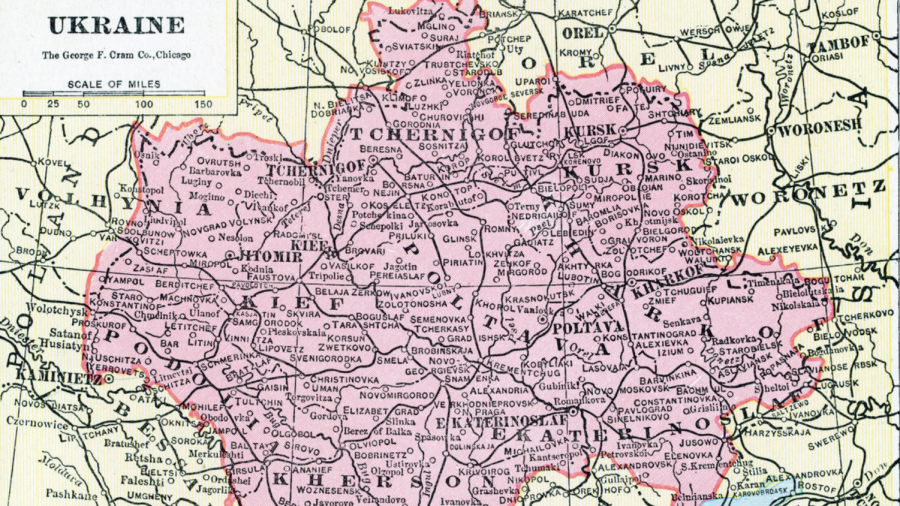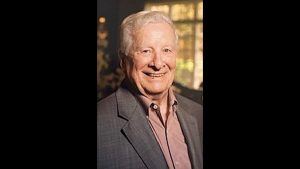Yet in 2022 as in 1918, matters of accuracy evaporate in the face of brute attacks. As a sustained onslaught with the goal of eliminating Jewish presence in Ukraine, the 1918-1921 pogroms rate as the worst before the Holocaust. Because of the bad image they gave to the government and military forces in charge, the events themselves became a taboo subject.
In Ukraine, a long history of Russian crimes against Jews
Published February 28, 2022
This story was originally published on Feb. 28, by the Forward. Sign up here to get the latest stories from the Forward delivered to you each morning.
Tragic events now unfolding in Ukraine echo a history of Russian human rights offenses against Jews in that country. Just over a century ago, between 1918 and 1921, tens of thousands of Ukrainian Jews were murdered, tortured and raped in hundreds of pogroms by marauders, some of them Russian.
Historians place the number of people affected at well over one million, although the precise number of dead has been estimated from 50,000 to 200,000. In chaotic scenes of people fleeing for safety, then as now, societal restraints can be eliminated and violence unleashed.
ADVERTISEMENT
Truth itself has been assailed during sustained unrest, as in Russian president Vladimir Putin’s recent announcement of Russia’s invasion of Ukraine. Putin justified the “special military operation” as necessary to “denazify” Ukraine.
Of course, President Volodymyr Zelenskyy of Ukraine is Jewish, and, based on electoral results, his country has a less significant neo-Nazi presence than Russia or some European nations.
ADVERTISEMENT
Last year, historian Andriy Pavlyshyn observed that until 1939, the Jews of Lviv, a city in western Ukraine around 70 kilometers from the Polish border, were forbidden to talk openly about previous pogroms.
Sad incidents
The euphemism “sad incidents” was instead adopted by Jewish writers to refer to a vast range of different styles of pogroms. Some were murderous, others focused on rape or other violence as public entertainments; still others were about looting.
Grzegorz Gauden, former editor-in-chief of Rzeczpospolita, a Polish economic and legal newspaper, observed acidly in “Lviv: The End of Illusions” that in 1918, when mobs stole items from Jewish homes, the marauders included elegantly garbed young women.
Wearing the latest Parisian fashions, complete with stylish hats and veils, these women brought their maidservants along to carry away the spoils, whether linen or jewelry, extracted from Jewish homeowners.
By comparison with such outraged later accounts by non-Jews, writings closer to the events by Jewish authors tended to be wistful and gently elegiac. Rokhl Faygnberg’s “Chronicle of a Dead City: The Destruction of Dubove” commemorated a settlement in the Carpathian Mountains of western Ukraine. In 1919, as Faygnberg describes, homes, synagogues, and the local Jewish cemetery were razed in Dubove as all Jewish presence was systematically erased.
These atrocities were committed by different factions with disparate reasons for blaming the Jews. All saw pogroms as cheerful, personally enriching forms of aerobic exercise. Vladimir Danilenko, Director of the State Archive of the Kiev Oblast, has published typical extortion threats sent to Jewish communities by armed militia groups during this time of social unrest.
In Dashev, Ukraine, a Colonel Lykho informed Jewish leaders that “your entire township will be destroyed” unless his troops were provided with a substantial sum of money and abundant supplies of high boots for Cossack commanders, underwear, saddle-making leather, soap, safety matches, “fine strong” tobacco, cigarette paper and “fine strong” Ukrainian vodka.
The Pogroms of Ukraine
As Nokhem Schtif’s “The Pogroms in Ukraine, 1918-19,” translated in 2019, explains, the sheer range of attacks, aggressors and supposed justifications is dizzying. The events, later inevitably overshadowed by the Holocaust, were strenuously denied or disclaimed by some of the worst offenders.
Symon Petliura, a Ukrainian politician and journalist, became the Supreme Commander of the Ukrainian Army. He presided over what historian Peter Kenez has termed the “greatest mass murder of Jews” before Hitler, occurring in Ukraine during the Civil War. Kenez added: “All participants in the conflict were guilty of murdering Jews, even the Bolsheviks; however [Petliura’s] Volunteer Army had the largest number of victims.”
Reluctant to intervene in the violence committed by soldiers under his command, possibly out of fear of alienating his followers, Petliura and his role during the deadly attacks have been criticized, but also defended, by later writers.
Further muddling matters, Petliura was assassinated in Paris in 1926 by Sholem Schwarzbard, a Yiddish poet who signed his verse as The Dreamer (Bal-Khaloymes). Schwarzbard was later charged with being a Soviet agent, acting on orders to stir trouble between Ukrainian Jews and non-Jews, since many of the latter continue even today to revere Petliura as a founding father, innocent of anti-Semitism.
The assassin Schwarzbard found time to recite a quasi-prose poem to his target, supposedly declaring, “Dirty dog, killer of my people, defend yourself!” before emptying a revolver into him. Schwartzbard was subsequently acquitted by a French jury on the grounds that pogroms by Petliura’s forces made the assault into justifiable homicide.
In favor of the Schwarzbard-as-secret-agent theory, Russian’s vindictiveness against Petliura continued after his death, when in 1928, two of his sisters, Orthodox nuns who had remained in Poltava, central Ukraine, were arrested and shot by the Soviet secret police.
And as Nokhem Schtif and later historians have underlined, other pogrom perpetrators were commanded by far more committed antisemites than Petliura. One such was Anton Denikin, Commander-in-Chief of the Armed Forces of South Russia, who informed British journalist John Ernest Hodgson that Bolshevism, fought by his White Army, was the result of a conspiracy between Jews and Freemasons. As Hodgson put it, Denikin’s forces “laid practically all the blame for their country’s troubles on the Hebrew.”
Wilson and George
When America’s President Woodrow Wilson and David Lloyd George, UK Prime Minister, refused to intervene after the Revolution to restore Imperial Russia, they too were accused by Denikin’s commanders of being Jewish.
The resulting violence meted out to Ukrainian Jews was unconvincingly justified with surreal, Putin-like explanations. Yet Soviet attempts to kidnap Denikin failed and he was never publicly charged with antisemitism, as Petliura had been.
Instead, Denikin tranquilly segued into a career as writer on military subjects in Paris. From 1945 until his death in 1947, he lived in New York City, where the atrocities against Jews by troops he had commanded were quietly forgotten.
In August 1947, Denikin died while vacationing near Ann Arbor, Michigan; he was buried with military honors in Detroit. His remains were later transferred to St. Vladimir’s Cemetery in Jackson, New Jersey and in 2005, reinterred at Donskoy Monastery Cemetery to the southwest of Central Moscow.
Donskoy Cemetery
Ironically, Donskoy Cemetery was also the surreptitious burial site, according to some reports, of the Ukrainian Jewish writer Isaac Babel, murdered in 1940 by Stalin’s Soviet Interior Ministry.
Definitely buried in Donskoy Cemetery as another unlikely neighbor to Denikin, is the Yiddish actor Solomon Mikhoels, murdered on Stalin’s orders in 1948.
All of which proves that despite any incongruities, bizarre lies by world leaders may be debunked with time and ambiguities clarified by diligent observance. Nuances matter, as the English Jewish novelist Israel Zangwill stated in October 1919, not quite absolving the Ukrainian government of responsibility for anti-Jewish violence.
Zangwill admitted that Ukraine was “working hard, if not perhaps its hardest, to stop massacres for which the unsettled state of Russia is largely responsible.”
May current lethal conditions be resolved peacefully, and future ones avoided, in Ukraine and vicinity.

















